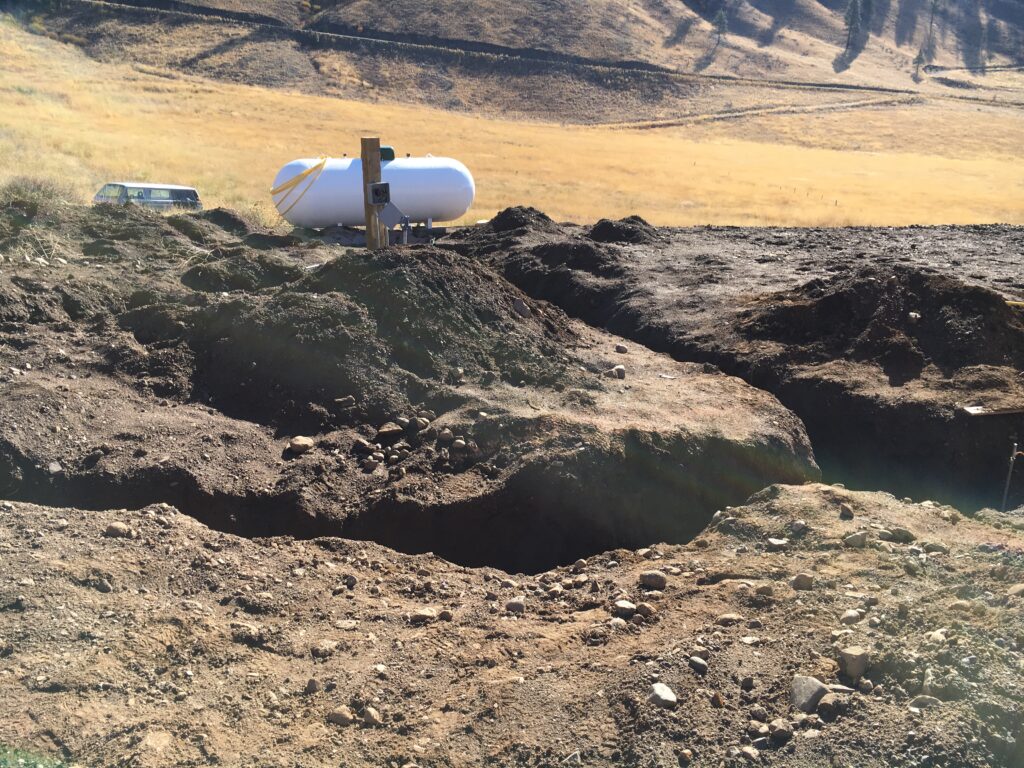It is important post-fire to locate and protect the septic, water, and electrical connections. Often times, debris is left on site for a considerable time. During clean up, or the following winter after a fire, infrastructure connections can be damaged. Locating these key infrastructure connections can save homeowners thousands of dollars in repair and replacement.
Typically, the underground components of a septic system are unharmed by wildfire. But components at or near the surface need to be evaluated.
- Open all parts of the system where there is access, then evaluate the pipe-structure connection, any associated clean-outs, and septic tanks and other pretreatment devices.
- Heat may damage PVC piping and other plastic/fiberglass components above or near the ground, so they need careful evaluation. This includes plastic risers and lids.
- The fire may damage pumps, wiring, aerobic treatment units, and media filter components, impacting the system’s functioning. The wiring at the top of junction boxes may be burned if the fire was in close proximity.
- Damage to electrical wires, controls, pipes, tanks and other components of these systems may affect system performance and proper treatment of wastewater. Be very careful around damaged wiring due to the potential for electrical shock. Turn off the power if there are connection concerns.
- Plan to cover and protect any connections long term (through the winter) as it may take some time to rebuild.
Resources:
After the Fire WA Drinking Water and Water System Factsheet
Handling Septic Systems Caught in a Wildfire
Private Wells After a Wildfire

